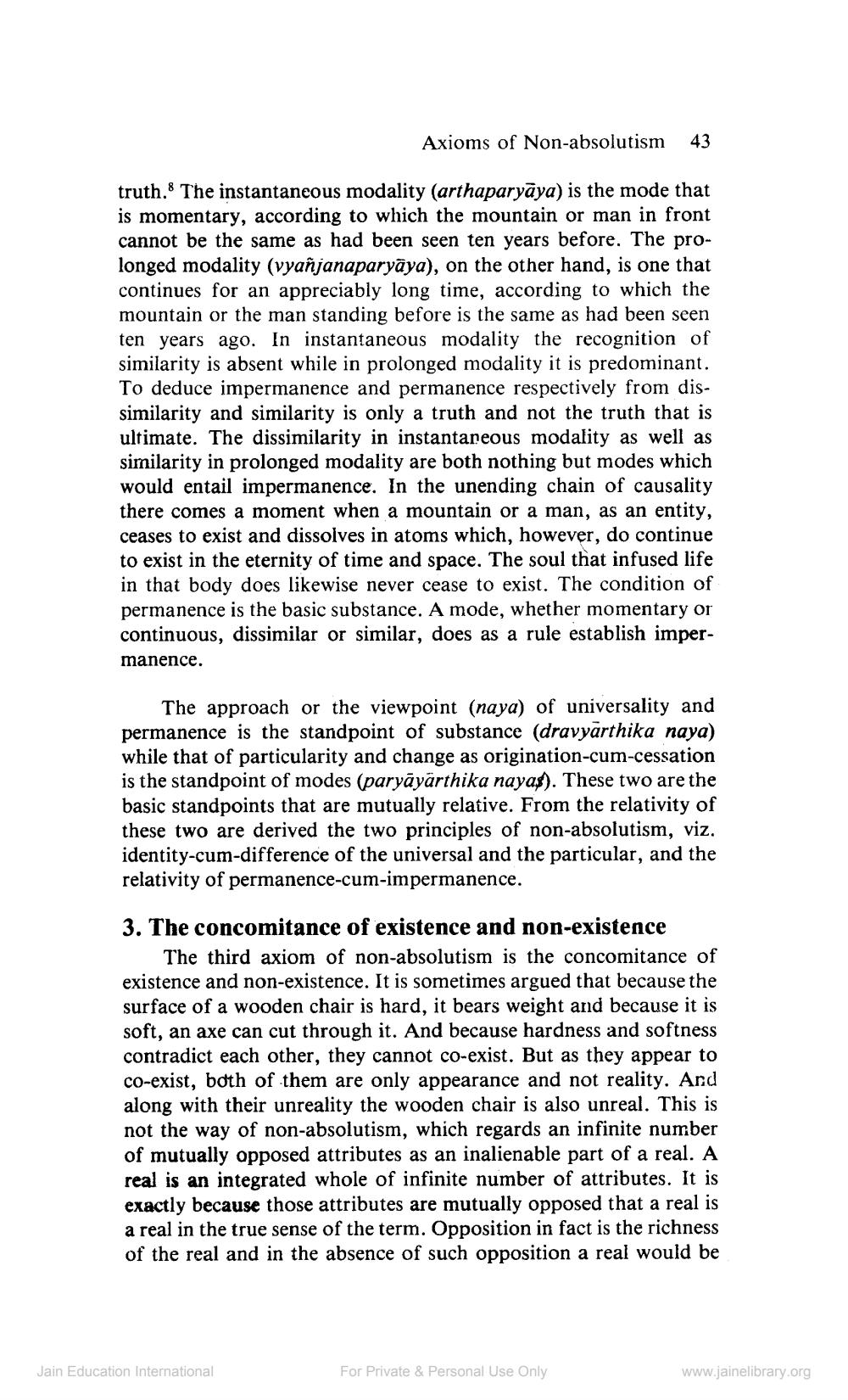________________
Axioms of Non-absolutism
43
truth. The instantaneous modality (arthaparyāya) is the mode that is momentary, according to which the mountain or man in front cannot be the same as had been seen ten years before. The prolonged modality (vyañjanaparyāya), on the other hand, is one that continues for an appreciably long time, according to which the mountain or the man standing before is the same as had been seen ten years ago. In instantaneous modality the recognition of similarity is absent while in prolonged modality it is predominant. To deduce impermanence and permanence respectively from dissimilarity and similarity is only a truth and not the truth that is ultimate. The dissimilarity in instantaneous modality as well as similarity in prolonged modality are both nothing but modes which would entail impermanence. In the unending chain of causality there comes a moment when a mountain or a man, as an entity, ceases to exist and dissolves in atoms which, however, do continue to exist in the eternity of time and space. The soul that infused life in that body does likewise never cease to exist. The condition of permanence is the basic substance. A mode, whether momentary or continuous, dissimilar or similar, does as a rule establish impermanence.
The approach or the viewpoint (naya) of universality and permanence is the standpoint of substance (dravyarthika naya) while that of particularity and change as origination-cum-cessation is the standpoint of modes (paryāyārthika nayas). These two are the basic standpoints that are mutually relative. From the relativity of these two are derived the two principles of non-absolutism, viz. identity-cum-difference of the universal and the particular, and the relativity of permanence-cum-impermanence.
3. The concomitance of existence and non-existence
The third axiom of non-absolutism is the concomitance of existence and non-existence. It is sometimes argued that because the surface of a wooden chair is hard, it bears weight and because it is soft, an axe can cut through it. And because hardness and softness contradict each other, they cannot co-exist. But as they appear to co-exist, both of them are only appearance and not reality. And along with their unreality the wooden chair is also unreal. This is not the way of non-absolutism, which regards an infinite number of mutually opposed attributes as an inalienable part of a real. A real is an integrated whole of infinite number of attributes. It is exactly because those attributes are mutually opposed that a real is a real in the true sense of the term. Opposition in fact is the richness of the real and in the absence of such opposition a real would be
Jain Education International
For Private & Personal Use Only
www.jainelibrary.org




